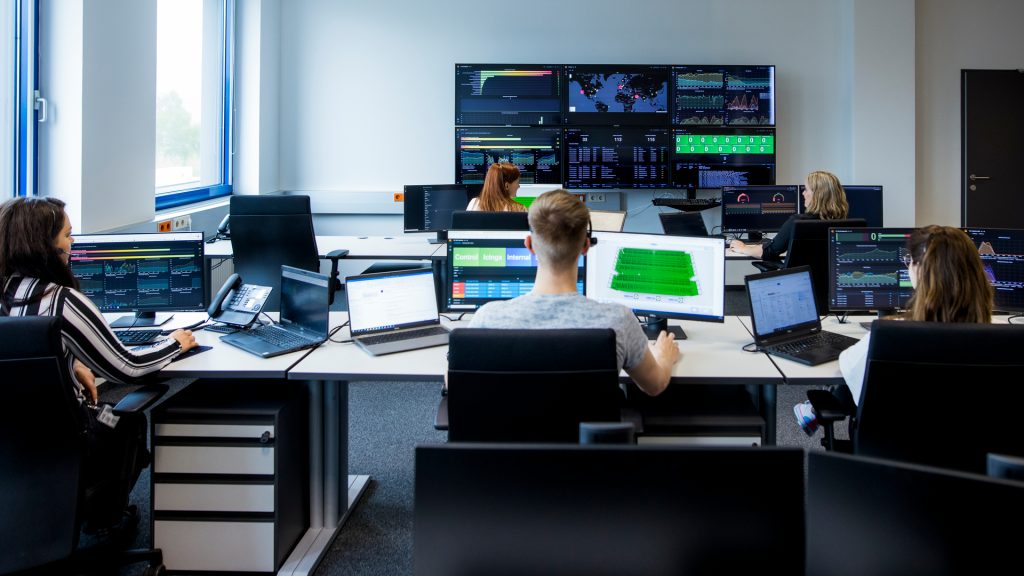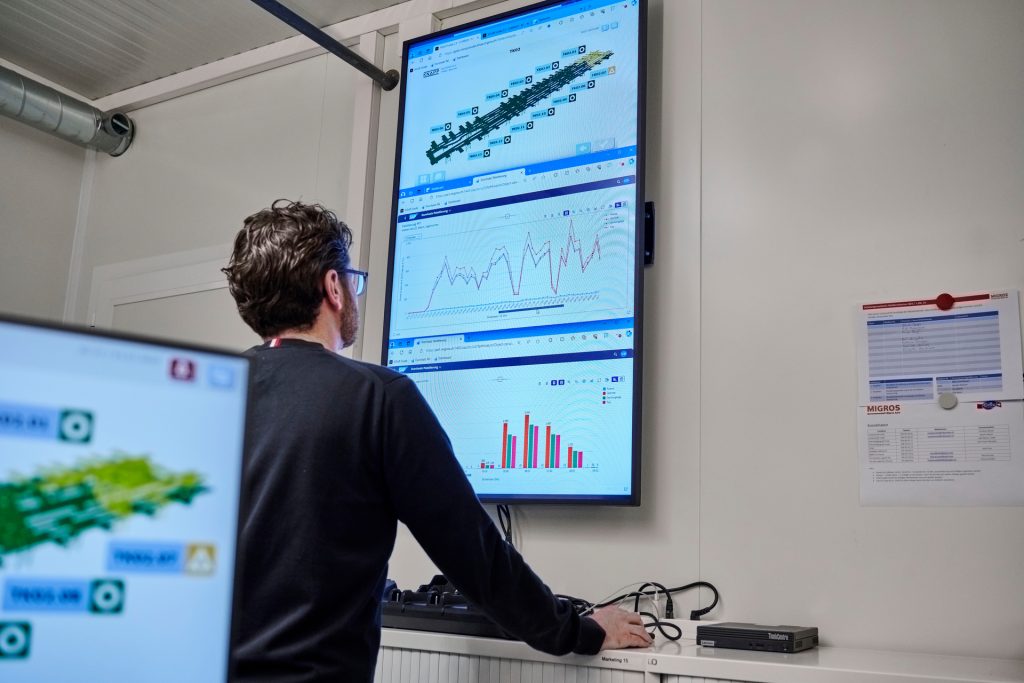Ready. Set. Go. The go-live of an SAP® EWM solution is the most important milestone in an implementation project, but this isn’t the end of the story. What happens afterwards? We shed light on 6 of the most important questions that you should ask yourself about SAP® EWM support after your system has gone live. These questions will not only ensure long-term smooth operation of your system but also help you to exploit its full potential. Whether you are already using your own in-house or an external SAP® EWM support, or are still considering how you can further improve your processes, we have valuable tips and insight for you.
SAP® EWM post go-live: What’s next?
Plan, go live, rinse and repeat. A warehouse management system (WMS) and a warehouse control system (WCS) are often in operation for more than 20 years. Just like a child that grows and develops through the years, SAP® EWM is a ‘living’ system that needs constant care and attention to keep running at its best. That’s why, in fact, SAP® EWM support begins after the go-live. Depending on the sector, regular updates and adaptations along with general maintenance are necessary to keep up with changing market conditions and customer requirements, which ultimately generates value.
Which steps are now specifically needed? The following 6 essential questions will help you position yourself optimally with your SAP® EWM solution after your system has gone live.
Contents
1) Who provides SAP® EWM support outside of my operating hours?
At first glance, this seems like a trivial question. However, many IT departments do not work in shifts and, in the worst case, close at 5 pm. Manufacturing, warehousing and logistics operations, however, often operate in shifts around the clock. Likewise, the SAP® EWM system is running 24 hours a day, 7 days a week. To ensure smooth operation, however, it is essential to receive support right away when problems arise. If this cannot be achieved to the extent that is needed using an on-call service through your own IT department, especially outside of business hours, external support may be the solution. A Service Desk with flexible service hours with up to 24/7 availability can provide rapid troubleshooting in order to avoid any serious negative impacts on your business and to minimize potential downtimes.
At KNAPP, we offer our ITL® certified 24/7 SAP® EWM Service Desk – regardless of whether the initial implementation was carried out with us or with another SAP partner. The service portfolio ranges from a full 24/7 hotline service to hybrid models offering support for defined times or specific processes. These services also include detecting and rectifying patterns of repetitive errors and performance issues as well as providing on-demand support for tasks, such as inventory support, hardware configuration, master data maintenance, system cleanup, archiving and S-notes.
In short:
2) Do you have a plan and budget ready to further optimize and adapt your SAP® EWM solution?
Rather than a fixed entity, the SAP® EWM system can be viewed as a flexible and ‘living’ system. To that effect, SAP updates and upgrades must be installed regularly. In addition, you should not underestimate the frequency at which your system or the requirements for your WMS change, and the implementation effort these changes require. Potential for improvement can usually be identified in particular in the hypercare phase and the first weeks of live operation.
“A WMS has to grow with the business to generate value.” “Without the necessary prioritization, you won’t be able to keep up with the market.”
Therefore, the timely and detailed planning of future adaptations for your SAP® EWM solution after it has gone live is of great importance. This includes, for example, determining available time windows outside of potential peak periods to smoothly implement the changes made to the system. In this context, it should also be considered whether hiring external support would make sense. Even minor bugs can greatly affect the entire system if they are not fixed in time. At KNAPP, our 24/7 SAP® EWM Service Desk provides immediate support for these kinds of issues already during incident rectification. What’s more, our SAP® EWM experts can also install any necessary updates and upgrades without delay, thereby making sure that your system is up to date at all times.
This optimization roadmap requires an appropriate budget. The level of automation in your warehouse and the complexity and customization of your business processes ultimately determine the size of the budget. Depending on the complexity of the system, the costs usually amount to 10–20 percent of the project costs for the first years.
In short:
3) What test strategy is being pursued with SAP® EWM post go-live?
A sophisticated test strategy is crucial to ensure the stability and productivity of the system in live operation. Thorough and effective tests prior to making changes to the system help to detect and correct potential problems early on.
Appropriate planning comprises possible time windows, responsible resources and a defined procedure. A strategy that follows the original implementation project can be of great use. Ideally, the employees conducting the tests are the same as those who oversaw this task in the implementation project. The following two test categories are significant in live operation:
Continually running these two test types facilitates smooth integration of all adaptations and updates and keeps the system running optimally.
At a certain level of automation or for the purpose of performing mass and performance tests, it’s worth considering a digital twin. Thanks to the use of real-time data, a digital twin can emulate interfaces between the WMS and subsystems and simulate warehouse processes as realistically as possible. An essential advantage of all these automation technologies is the possibility to conduct end-to-end tests for all business processes without physical access. Furthermore, mass tests can be used to check if SAP® EWM is behaving correctly before the changes are implemented during live operation.
In short:
4) How is my SAP® EWM support organized during live operation?
Without proper implementation, all strategies and planning concerning the SAP® EWM support are pointless. This requires the right tools during live operation. The tools help to monitor different aspects of the system to ensure smooth operation of all processes. At KNAPP, we recommend our customers IT Service Management Tools, in short ITSM tools, for live operation. These tools offer support for automating and managing various IT processes, such as incident management, change management, problem management and service request management. These programs are useful for monitoring and managing system processes, for identifying and rectifying problems as well as ensuring the system’s stability and performance. Thanks to online access, they can also be used for transparent cooperation with any external support services, such as our KNAPP 24/7 SAP® EWM Service Desk, and easy integration for automatically updating customer ticket systems through our own ticket system.

Consequently, such tools form the basis for independent and proactive monitoring of the SAP® EWM system. At the same time, it is also possible for SAP partners like KNAPP to take on this task. This procedure together with the implementation of a professional control room is particularly useful for automated warehouses. This control room is equipped with live monitors that display all the critical points in the system and real-time dashboards fed with data from the production system. The employees centrally control and monitor the entire goods flow in the warehouse. If there are delays or the entire goods flow is interrupted, they identify and rectify the problem in the control room.
The control room can be fully managed internally or with the support of an SAP partner. For this purpose, KNAPP provides assistance from Logistics Operations Engineers. Along with coordinating release updates for the production system, these engineers also rectify software incidents and support the technicians in their daily operations in the control room.
In short:
5) Are my SAP® EWM key users sufficiently qualified for live operation?
A strong key user team is essential to unlock the full potential of a WMS solution. Comprehensive training courses and periodic training help employees to identify and solve problems independently. Your employees should also be able to implement minor adaptations and optimizations on their own. In addition to the SAP® EWM basic in-service training courses by SAP, KNAPP also offers specific training courses for key users for them to become familiar with customer-specific SAP® EWM extensions to their solution. With this all-in-one package, they can take on important project tasks, such as the creation of test cases or providing end user training courses, and act as a Service Desk for trouble-free operation after the system has gone live.

To back up the key user team in their daily operations, but also especially while preparing for peak periods and to successfully manage them, an external SAP® EWM support could prove to be highly valuable. These additional resources can be hired temporarily, or as described above, in the form of Logistics Operations Engineers, to ensure the stability of the SAP® EWM system right after go-live or at the end of the hypercare phase. They monitor the systems, identify potential areas for improvement and optimize the system from the very start. This ensures maximum efficiency and performance in the long term.
In short:
6) How is my knowledge management organized for SAP® EWM support?
Having an effective knowledge management is imperative to ensure an efficient SAP® EWM support. This concerns not only the in-house team, but also any cooperation with an SAP partner. To avoid silo mentality and behavior, it’s important to make all relevant information and documentation centrally available and easily accessible. In this regard, it is also essential for the responsible persons to diligently and accurately keep the WMS documentation up to date.
This includes fully documenting interface adaptations, specifications on how to resolve error situations and subsequent changes to the implementation and operation phases. This not only makes it easier for the employees to work independently during daily operations, but also facilitates long-term maintenance of the system regarding updates, migrations or retrofits. Platforms such as the SAP Support Portal and the SAP community are also useful as they provide access to the latest SAP Notes, Knowledge Base articles and best practices. Additionally, regular training courses and knowledge exchange within the team contribute to keeping all participants up to date and make it possible for them to quickly respond to any challenges.
In short:
7) Do you have any specific questions about your SAP® EWM support?
We are readily available to answer all your questions about your SAP® EWM solution after your system has gone live. Feel free to reach out and arrange for a personal meeting where we can talk in detail about the specific challenges for your logistics operations. Together, we can find out how we can provide you with the best SAP® EWM support.
Further reading recommendations

Imagine a world where you can use a single platform to optimize your logistics processes, provide innovations such as automation technology and integrate them all in your SAP® IT landscape. SAP BTP makes it a reality. Discover more in our blog post.

What are 11 questions should you absolutely ask yourself before carrying out an SAP® EWM implementation project? Read on and find out in this blog post.

Our solution in S/4HANA Cloud, private edition, processes 450,000 SAP® EWM MFS telegrams each hour. Don’t believe us? Read our blog to find out how we do it.

